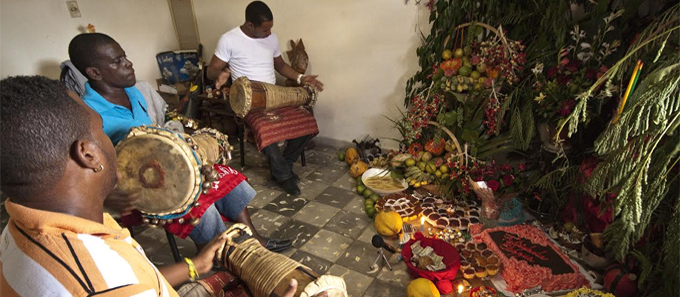
Music and Rites Batá Drums in the Cuban Santería

Drums in the Cuban Santería, coordinated by Marco Lutzu and organised by the Fondazione Giorgio Cini Intercultural Institute of Comparative Music Studies in collaboration with the Conservatorio di Musica “Benedetto Marcello” , Venice.
On 9 November, there will be a workshop in the Venice conservatoire on Afro-Cuban percussions illustrating the main instruments and rhythms used in ritual contexts of the Afro-Cuban tradition. Then on 10 November, at the Fondazione Giorgio Cini, the group Omo Abbilona will give a concert featuring the rhythms, songs and dances of the Santería, the most important Afro-Cuban religion. Santería is a syncretic combination of the European colonisers’ Catholicism and the religious beliefs of slaves called Lucumi, a term used on Cuba for the African people belonging to the ethnic-linguistic group of the Yoruba. Focused on the cult of the orichás (the elemental spirits or manifestations of a supreme god), Santería has various rituals in which singing, dancing and the rhythm of percussion instruments play a key role. The main instruments of the Santería are the batá, sacred drums only played by a cast of priests-cum-professional musicians called omo Aña, i.e. the sons of Aña. The music of the batá is alternated with improvised sections and other strictly codified parts – “conversations” between drums with continuous changes in tempo, giving rise to a dense, intricate polyrhythmic texture.
Omo Abbilona is made up of young Havana musicians, greatly appreciated in the Cuban capital for their capacity to conduct rigorous religious ceremonies that are particularly compelling from the musical point of view.
